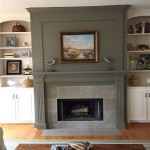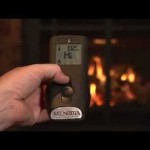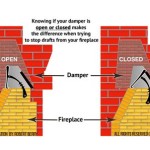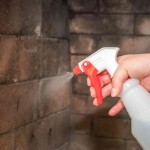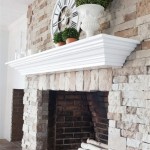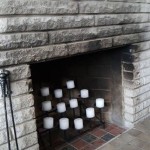Desa Gas Fireplaces: A Comprehensive Overview
Desa International, formerly known as Desa Heating, was a significant player in the residential heating and fireplace industry for several decades. Known for a wide range of gas fireplaces, stoves, and other heating appliances, Desa products were commonly found in homes across North America. While Desa International no longer exists as a distinct entity, its legacy continues through the many Desa gas fireplaces still in operation and the aftermarket support available for these units. Understanding the characteristics, maintenance, and troubleshooting of Desa gas fireplaces remains essential for homeowners and professionals alike.
This article provides a comprehensive overview of Desa gas fireplaces, covering key aspects such as their history, common models, operational features, maintenance requirements, troubleshooting tips, and safety precautions. It aims to equip readers with the necessary knowledge to effectively manage and maintain their Desa gas fireplaces, ensuring safe and efficient operation.
History and Evolution of Desa International
Desa International's roots trace back to various acquisitions and mergers within the heating industry. Before becoming Desa International, the company operated under different names and brands. The company evolved through mergers and acquisitions, ultimately becoming a significant manufacturer of gas fireplaces and other heating appliances. This period saw the development of a diverse product line that catered to various consumer needs and preferences.
Over the years, Desa focused on innovation and efficiency, incorporating advanced technologies into its gas fireplace designs. These advancements included improved combustion systems, enhanced safety features, and user-friendly controls. Desa’s commitment to quality and performance solidified its position as a leading brand in the residential heating market. However, despite its success, Desa International eventually ceased operations, leading to the discontinuation of its product line. This closure has led to challenges in obtaining original parts and dedicated customer support, necessitating the reliance on aftermarket suppliers and independent service technicians.
Despite the company’s closure, the widespread presence of Desa gas fireplaces ensures ongoing demand for parts, service, and information. Understanding the history of Desa International provides valuable context for appreciating the design and functionality of these fireplaces, as well as the challenges associated with their continued operation.
Common Desa Gas Fireplace Models and Features
Desa International produced a diverse range of gas fireplace models, each designed with specific features and capabilities to meet varying consumer needs. Some of the most common and recognizable Desa gas fireplace models include: venting gas fireplaces, vent-free gas fireplaces, and gas fireplace inserts. Each model had diverse features, such as BTU output, ignition type, and control systems.
Venting gas fireplaces, also known as direct vent fireplaces, are designed to be vented through a chimney or vent pipe. They provide efficient heating and realistic flame appearance. Vent-free gas fireplaces, on the other hand, do not require a vent and are designed to operate safely without one. These models often include oxygen depletion sensors (ODS) to ensure safe operation. Gas fireplace inserts are designed to be installed within existing wood-burning fireplaces, converting them into efficient gas-burning appliances. These inserts offer a convenient and cost-effective way to upgrade existing fireplaces.
Desa gas fireplaces typically include features such as adjustable flame height, thermostatic controls, and remote control operation. Many models also incorporate safety features such as flame failure sensors, which automatically shut off the gas supply if the flame is extinguished. Understanding the specific features of individual Desa gas fireplace models is essential for proper operation and maintenance. Owners should consult the original owner’s manual for detailed information on their specific model.
Maintenance and Troubleshooting Desa Gas Fireplaces
Regular maintenance is crucial for ensuring the safe and efficient operation of Desa gas fireplaces. Proper maintenance not only extends the lifespan of the fireplace but also prevents potential hazards such as gas leaks and carbon monoxide poisoning. Key maintenance tasks include cleaning the burner assembly, inspecting the venting system, and checking the gas connections.
Cleaning the burner assembly involves removing any dust, debris, or soot that may have accumulated over time. This can be done using a soft brush or vacuum cleaner. Inspecting the venting system is essential to ensure that it is free from obstructions and that all connections are secure. Any leaks or damage should be repaired promptly. Checking the gas connections involves inspecting the gas lines and fittings for any signs of leaks. A simple soap and water solution can be used to detect leaks – if bubbles appear when the solution is applied to a connection, it indicates a leak.
Troubleshooting common issues with Desa gas fireplaces requires a systematic approach. One common problem is a pilot light that won't stay lit. This can be caused by a dirty pilot assembly, a faulty thermocouple, or a malfunctioning gas valve. Another common issue is a fireplace that produces a weak or uneven flame. This can be caused by a clogged burner, low gas pressure, or a defective gas regulator.
If the fireplace is not igniting, it could be due to a faulty igniter, a tripped circuit breaker, or a problem with the gas supply. In some cases, the fireplace may shut off unexpectedly during operation. This could be caused by an overheating issue, a low oxygen level (in vent-free models), or a malfunctioning safety sensor. When troubleshooting Desa gas fireplaces, it is important to follow the manufacturer's instructions and to consult with a qualified service technician if necessary.
Safety Precautions for Operating Desa Gas Fireplaces
Operating a Desa gas fireplace safely requires adherence to several important safety precautions. Gas fireplaces, while convenient, pose risks if not properly maintained and operated. These include the risk of gas leaks, carbon monoxide poisoning, and fire hazards. Strict adherence to safety guidelines is essential to mitigate these risks.
First and foremost, it is crucial to have a working carbon monoxide detector installed in the vicinity of the fireplace. Carbon monoxide is a colorless, odorless gas that can be deadly if inhaled. Regular testing of the carbon monoxide detector is necessary to ensure that it is functioning properly. Additionally, all gas connections should be checked periodically for leaks. Using a soap and water solution to check for leaks is a simple and effective method. If a gas leak is suspected, the gas supply should be shut off immediately, and a qualified technician should be contacted.
It is also important to keep combustible materials away from the fireplace. Curtains, furniture, and other flammable items should be kept a safe distance from the fireplace to prevent fire hazards. The fireplace should never be used to dry clothing or other items. Furthermore, regular maintenance should be performed on the fireplace to ensure that it is operating safely and efficiently. This includes cleaning the burner assembly, inspecting the venting system, and checking the gas connections.
Owners of vent-free Desa gas fireplaces should be particularly cautious, as these models rely on an oxygen depletion sensor (ODS) to prevent carbon monoxide buildup. If the ODS malfunctions, it can lead to dangerous levels of carbon monoxide. Therefore, it is essential to ensure that the ODS is functioning properly and that the fireplace is used in a well-ventilated area.
Finally, it is always recommended to consult with a qualified service technician for any repairs or maintenance that requires specialized knowledge or tools. Attempting to repair a gas fireplace without proper training can be dangerous and may void any warranties. By following these safety precautions, homeowners can enjoy the warmth and comfort of their Desa gas fireplace while minimizing the risks associated with its operation.
Finding Replacement Parts and Servicing Options
Locating replacement parts and reliable servicing options for Desa gas fireplaces can be challenging due to the company’s discontinued operations. However, several resources and strategies can help owners maintain their fireplaces and ensure continued operation. Understanding these avenues is crucial for keeping Desa gas fireplaces in good working order.
One of the primary resources for replacement parts is aftermarket suppliers. Numerous online retailers and specialty stores offer compatible parts for Desa gas fireplaces. It’s essential to verify compatibility by cross-referencing part numbers and consulting with knowledgeable suppliers. Some common replacement parts include thermocouples, igniters, gas valves, burners, and pilot assemblies. Additionally, some salvage yards and appliance repair shops may have used parts available. However, the condition of used parts should be carefully evaluated before purchase.
Finding competent service technicians familiar with Desa gas fireplaces requires some research. Local HVAC companies and fireplace service providers may have technicians with experience servicing Desa units. Inquiring about their familiarity with Desa models and their access to parts is important. Online forums and local community groups can also be valuable resources for finding recommended technicians. Reading customer reviews and checking credentials can help ensure that the chosen technician is qualified and reliable.
When seeking servicing, it’s beneficial to provide the technician with as much information as possible about the fireplace, including the model number, age, and any known issues. This information can aid the technician in diagnosing the problem and sourcing the necessary parts. Additionally, maintaining a record of past repairs and maintenance can provide valuable insights into the fireplace’s history and potential issues.
Although obtaining original Desa parts and dedicated customer support is no longer possible, the availability of aftermarket parts and competent service technicians allows owners to continue enjoying their Desa gas fireplaces. Being proactive in sourcing parts and seeking qualified servicing ensures that these fireplaces remain a reliable source of heat and comfort for years to come.

Desa Vanguard Amity Cast Iron Vent Free Nat Gas Stove Fireplace

Fmi Desa Tc36n Tudor Millivolt Direct Vent Fireplace Parts

Desa Unvented Gas Fireplace

Desa Unvented Gas Fireplace

Comfort Glow Direct Vent Gas Burning Fireplaces

Unvented Vent Free Desa

Fireplaceinsert Com Comfort Flame Vent Free Gas Fireplace Single Compact

Desa Direct Vent Fireplace Side Mount Sit Natural Gas Pilot Assembly J Bourlier S Barbecue And

Fmi Desa Vc36pb Victorian Millivolt Direct Vent Fireplace Parts

Desa Fmi Direct Vent Fireplace
Related Posts

